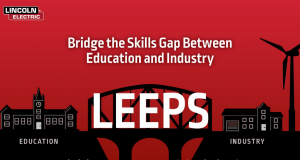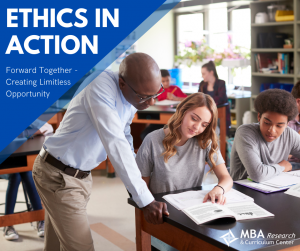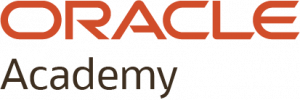Student Competitions. What better way to motivate your students than with a little friendly competition?
Each year, Certiport hosts two learner competitions: the Adobe Certified Professional Championship and the Microsoft Office Specialist (MOS) Championship. These competitions bring technology certifications to life for your learners, provide them with a positive platform to showcase their skills, and give them a unique opportunity to earn valuable rewards and recognition.
Keep reading to get answers to your questions about these competitions!
 What is the MOS Championship?
What is the MOS Championship?
The Microsoft Office Specialist Championship presented by Certiport, Inc. is a competition that tests students’ skills on Microsoft Office Word, Excel® and PowerPoint®. Top students are invited to represent their respective states at the US National Championship. At the US National Championship, each student competes for National Champion in his or her category.
What is the Adobe Certified Professional Championship?
The Adobe Certified Professional Championship presented by Certiport is a competition that tests students’ design skills using Adobe Photoshop, Illustrator and InDesign. Top students are invited to represent their respective states at the US National Championship where they will create a designated design project for Certiport’s chosen nonprofit client.
How do my learners enter the Championships?
 Entry into the MOS and Adobe Championship differs. To enter the MOS Championship, students can participate in the Championship by taking a qualifying Microsoft Office Specialist certification exam and entering their score into the MOS World Championship. There are two qualification periods: the Fall and Spring. At the conclusion of each qualification period, competitors with the top scores will be invited to compete at the MOS US National Championship.
Entry into the MOS and Adobe Championship differs. To enter the MOS Championship, students can participate in the Championship by taking a qualifying Microsoft Office Specialist certification exam and entering their score into the MOS World Championship. There are two qualification periods: the Fall and Spring. At the conclusion of each qualification period, competitors with the top scores will be invited to compete at the MOS US National Championship.
The Adobe Championship requires two steps to qualify. First, a designer must pass one or more of the following exams by the end of the qualifying period:
- Adobe Certified Professional Visual Communication using Adobe Photoshop
- Adobe Certified Professional in Print & Digital Media, Publication using Adobe InDesign
- Adobe Certified Professional in Graphic Design & Illustration using Adobe Illustrator.
Second, a designer must also enter an original design project with accompanying source files (Adobe Photoshop, Illustrator, and/or InDesign) to the submission form on the competition website. Similar to the MOS Championship, there are two qualification periods: the Fall and Spring. At the conclusion of each qualification period, competitors with the top design projects will be invited to compete at the Adobe Certified Professional US National Championship.
What versions of the software are used at the Championship?
The 2023 MOS Championship will include the following six tracks:
- Microsoft Word (Office 2016)
- Microsoft Excel® (Office 2016)
- Microsoft PowerPoint® (Office 2016)
- Microsoft Word (Microsoft 365 Apps and Office 2019)
- Microsoft Excel® (Microsoft 365 Apps and Office 2019)
- Microsoft PowerPoint® (Microsoft 365 Apps and Office 2019)
At the Adobe Championship, students will be working in the most recently released version of Adobe Creative Cloud. At the event, they’ll be able to work in Adobe Photoshop, Adobe Illustrator, and/or Adobe InDesign.
What are the qualifications to compete?
Anyone may participate in the qualification round of testing, but to participate in the US National and World Championship events, candidates must be students that are enrolled in an approved, degree-seeking academic institution recognized by the state in which it operates. Students must also be between the ages of 13 and 22 (as of June 15 of the competition year).
What kind of exam do competitors take at the competition? Is it the same as the certification exam?
For the MOS Championship, competitors will be taking a completely new exam. Like the certification exam, this will be project based. However, since the competition tests the most advanced students from around the country, candidates are encouraged to study and prepare for topics outside the certification exam. A great way to prepare is to take the Microsoft Office Specialist Expert exams.
For the Adobe Championship, students will not be taking an exam at all. Designers create a project for a non-profit client. This means that competitors will use the skills from the certification exam and apply them in a real-world design scenario.
Looking to promote the competition?
Certiport wants educators to have the materials they need to promote the MOS World Championship in their classroom or school. Visit our Media page to request promotional items, view videos and download your own poster, fliers, press releases and other materials to support your institutions in participating in the MOS World Championship.
Still have questions?
Visit https://certiport.pearsonvue.com/Educator-resources/Competitions.aspx
Certiport wants educators to have the materials they need to promote the MOS World Championship in their classroom, school, or country. Visit our Media page to request promotional items, view videos, and download your own posters, fliers, press releases, and other materials to get your students excited about the MOS World Championship.
Theresa Curtiss, Certiport


 There is a welding skills gap, and that could actually mean a couple different things: It could mean there simply are not enough skilled welders to fill the welding careers available, or it could mean there is a disconnect between the skills employers are looking for and the skills applicants actually have. Either way, this gap existing is a real problem in the welding industry today—for both employers and job-seeking welders.
There is a welding skills gap, and that could actually mean a couple different things: It could mean there simply are not enough skilled welders to fill the welding careers available, or it could mean there is a disconnect between the skills employers are looking for and the skills applicants actually have. Either way, this gap existing is a real problem in the welding industry today—for both employers and job-seeking welders.  In the next decade, job seekers in manufacturing will find plenty of openings. It’s projected that nearly 3.5 million manufacturing jobs will need to be filled in the next 10 years. The challenge, however, is that there aren’t enough qualified workers to fill the positions. An aging workforce, changing technologies, and misperceptions about the industry all contribute to the shortage. This has serious consequences for the manufacturing industry, which is overwhelmingly not prepared. In fact, nearly nine out of 10 manufacturers say that their company is having problems finding skilled workers in manufacturing.
In the next decade, job seekers in manufacturing will find plenty of openings. It’s projected that nearly 3.5 million manufacturing jobs will need to be filled in the next 10 years. The challenge, however, is that there aren’t enough qualified workers to fill the positions. An aging workforce, changing technologies, and misperceptions about the industry all contribute to the shortage. This has serious consequences for the manufacturing industry, which is overwhelmingly not prepared. In fact, nearly nine out of 10 manufacturers say that their company is having problems finding skilled workers in manufacturing.  By nature, educators are deeply attuned to the needs of their learners—and often even the needs of their families. But these days, many educators are navigating how to respond to the often-increased needs and greater numbers of crises within (and sometimes outside of) their classroom ecosystems. Where is the game plan for—as we are frequently reminded—these unprecedented times?
By nature, educators are deeply attuned to the needs of their learners—and often even the needs of their families. But these days, many educators are navigating how to respond to the often-increased needs and greater numbers of crises within (and sometimes outside of) their classroom ecosystems. Where is the game plan for—as we are frequently reminded—these unprecedented times? Holly Atha,
Holly Atha, 

 As Oracle’s global philanthropic educational program, Oracle Academy is open to educators around the world to advance technology education, skills, innovation, diversity and inclusion. We offer academic institutions and their educators free teaching and learning resources ― including curriculum, cloud, software, and educator professional development ― that help prepare millions of students with hands-on practice and career-relevant skills.
As Oracle’s global philanthropic educational program, Oracle Academy is open to educators around the world to advance technology education, skills, innovation, diversity and inclusion. We offer academic institutions and their educators free teaching and learning resources ― including curriculum, cloud, software, and educator professional development ― that help prepare millions of students with hands-on practice and career-relevant skills. The past few years have brought immense change to the economic mobility landscape. While some Americans experienced record high gains in the stock market, millions more experienced unemployment, eviction, and personal financial setbacks with potentially long-term effects. Bearing the brunt of these economic shocks were people of color and women, groups that have long been excluded from access to economic opportunities.
The past few years have brought immense change to the economic mobility landscape. While some Americans experienced record high gains in the stock market, millions more experienced unemployment, eviction, and personal financial setbacks with potentially long-term effects. Bearing the brunt of these economic shocks were people of color and women, groups that have long been excluded from access to economic opportunities.

 We offer several resources to support state CTE leaders in leveraging CTE programs to develop learner experiences and pathways in energy careers. . In addition, some states have a specific energy Career Cluster devoted to preparation for this sector. CTE also provides opportunities to earn stackable certificates, industry-recognized credentials, and degrees as outlined by the Center for Energy Workforce Development’s
We offer several resources to support state CTE leaders in leveraging CTE programs to develop learner experiences and pathways in energy careers. . In addition, some states have a specific energy Career Cluster devoted to preparation for this sector. CTE also provides opportunities to earn stackable certificates, industry-recognized credentials, and degrees as outlined by the Center for Energy Workforce Development’s  A “black swan” event is an unpredictable occurrence beyond what is normally expected of a situation, often with severe consequences. While the entire educational environment was impacted by the coronavirus pandemic, Career Technical Education (CTE), which focuses on hands-on learning, was heavily impacted by this black swan event. In addition to navigating the perils of COVID-19, CTE experienced instructor shortages and concerns about the limited related work experience of those available for these positions. Though many states have relevant, standardized, industry-identified competencies, the associated curriculum must be delivered by individuals with a solid understanding of the field, which is generally based on work experience. In some cases, these concerns can result in a reduction of content depth delivered in a CTE classroom.
A “black swan” event is an unpredictable occurrence beyond what is normally expected of a situation, often with severe consequences. While the entire educational environment was impacted by the coronavirus pandemic, Career Technical Education (CTE), which focuses on hands-on learning, was heavily impacted by this black swan event. In addition to navigating the perils of COVID-19, CTE experienced instructor shortages and concerns about the limited related work experience of those available for these positions. Though many states have relevant, standardized, industry-identified competencies, the associated curriculum must be delivered by individuals with a solid understanding of the field, which is generally based on work experience. In some cases, these concerns can result in a reduction of content depth delivered in a CTE classroom.